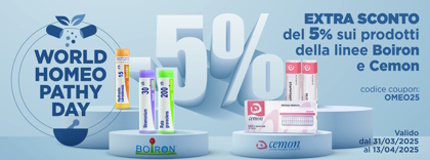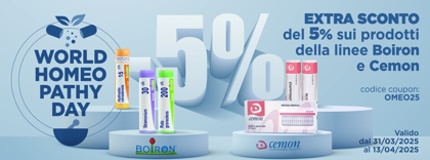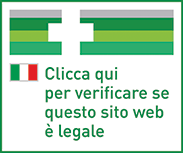Ship in Europe, Find out rates!
Language
Lomexin Cutaneous Powder 2% Fenticonazole Antifungal 50g

Regular Price
€12.40
Special Price
€12.12
-2%
Save: €0.28
Out of stock
- box Delivery in Italy in 24/48 and free returns
- star3.000+ positive reviews
- dropboxOver 60,000 products in the catalog
Manufacturer
RECORDATI
SKU
026043051
Active principle
FENTICONAZOLO NITRATO
NAME
LOMEXIN
PHARMACOTHERAPEUTIC CATEGORY
Topical antifungals.
ACTIVE PRINCIPLES
Fenticonazole nitrate.
EXCIPIENTS
2% cream: propylene glycol; hydrogenated lanolin; refined almond oil; polyglycol ester of fatty acids; cetyl alcohol; glyceryl monostearate; sodium edetate; purified water. Skin spray, 2% solution: alcohol; propylene glycol; purified water. Skin solution 2%: alcohol; hydroxypropylcellulose; purified water; propylene glycol. Skin powder 1%: colloidal hydrated silica; zinc oxide; talc. Skin powder 2%: colloidal hydrated silica; zinc oxide; talc.
INDICATIONS
2% cream, skin spray, 2% solution, 2% skin solution, 1% and 2% skin powder: dermatomycosis due to dermatophytes (Trichophyton, Microsporum, Epidermophyton) of different localization: tinea capitis, tinea corporis, tinea cruris, tinea pedis ( athlete's foot), tinea manuum, tineafaciei, tinea barbae, tinea unguium; skin candidiasis (intertrigo, perleche, facial candidiasis, diaper, perineal and scrotal candidiasis); balanitis, balanoposthitis; onychia and paronychia; pityriasis versicolor (from Pityrosporum orbiculare and P. ovale); otomycosis (from Candida or molds); only if there are no lesions of the eardrum; erythrasma; mycosis with bacterial superinfections (from Gram positive bacteria).
CONTRAINDICATIONS / SECONDARY EFFECT
Hypersensitivity to the active substance or to any of the listed excipients; pregnancy.
DOSAGE
The product should be applied 1-2 times a day, according to medical opinion, after washing and drying the injured part, using the formulation suitable for the location of the lesion. 2% cream: it is indicated for the treatment of hairless skin, skin folds and mucous membranes; it is applied by rubbing lightly. It is preferably used for dry mycoses: pityriasis versicolor, erythrasma, onychomycosis (in onychomycosis the cream should be applied with an occlusive bandage); the cream is suitable for use in male genital mycosis. Skin spray, 2% solution and 2% skin solution: they are indicated for localizations on the scalp and for skin areas covered with hair. Furthermore, the spraycutaneo solution is easy and convenient to use for extensive mycoses and for areas that are difficult to reach. Skin powder 1% and 2%: it is used for athlete's foot and in general for intertriginous areas and wet lesions, both as a single treatment and as a complement to the cream. In foot infections it is recommended to sprinkle the inside of socks and shoes with the drug powder. The drug 1% cutaneous powder is indicated for the prophylaxis of reinfections. In athlete's foot and onychomycosis, in order to avoid reinfection, it is advisable to continue the above treatment for one or two weeks after the disappearance of the manifestations. The product is not greasy, does not stain and is easily removable with water.
STORAGE
None.
WARNINGS
At the time of application on the lesion, a modest burning sensation may be found which disappears rapidly. The use, especially if prolonged, of products for topical use, can give rise to sensitization phenomena. In this case, stop the treatment and consult your doctor to establish a suitable therapy. 2% Cream, Skin Spray, 2% Solution, 2% Skin Solution contain propylene glycol. May cause skin irritation. The 2% cream contains cetyl alcohol. It can cause local skin reactions (eg contact dermatitis); contains hydrogenated lanolin. It can cause local skin reactions (eg contact dermatitis).
INTERACTIONS
None known.
SIDE EFFECTS
When used as recommended, Lomexin is only poorly absorbed and no systemic side effects are expected. Prolonged use of topical products can cause sensitization phenomena. Undesirable effects are listed below, listed by MedDRA system organ class and frequency: very common (> = 1/10); common (> = 1/100, <1/10); uncommon (> = 1 / 1,000, <1/100); rare (> = 1 / 10,000, <1 / 1,000); very rare (<1 / 10,000); not known. Skin and subcutaneous tissue disorders. Moltoraro: erythema, pruritus, rash, erythematous rash, skin irritation, skin burning sensation. The reporting of suspected adverse reactions that occur after the authorization of the drug is important, as it allows continuous monitoring of the benefit / risk ratio of the drug.
PREGNANCY AND BREASTFEEDING
Although the percutaneous absorption of fenticonazole is rather poor, it is recommended not to use the medicine during pregnancy.
LOMEXIN
PHARMACOTHERAPEUTIC CATEGORY
Topical antifungals.
ACTIVE PRINCIPLES
Fenticonazole nitrate.
EXCIPIENTS
2% cream: propylene glycol; hydrogenated lanolin; refined almond oil; polyglycol ester of fatty acids; cetyl alcohol; glyceryl monostearate; sodium edetate; purified water. Skin spray, 2% solution: alcohol; propylene glycol; purified water. Skin solution 2%: alcohol; hydroxypropylcellulose; purified water; propylene glycol. Skin powder 1%: colloidal hydrated silica; zinc oxide; talc. Skin powder 2%: colloidal hydrated silica; zinc oxide; talc.
INDICATIONS
2% cream, skin spray, 2% solution, 2% skin solution, 1% and 2% skin powder: dermatomycosis due to dermatophytes (Trichophyton, Microsporum, Epidermophyton) of different localization: tinea capitis, tinea corporis, tinea cruris, tinea pedis ( athlete's foot), tinea manuum, tineafaciei, tinea barbae, tinea unguium; skin candidiasis (intertrigo, perleche, facial candidiasis, diaper, perineal and scrotal candidiasis); balanitis, balanoposthitis; onychia and paronychia; pityriasis versicolor (from Pityrosporum orbiculare and P. ovale); otomycosis (from Candida or molds); only if there are no lesions of the eardrum; erythrasma; mycosis with bacterial superinfections (from Gram positive bacteria).
CONTRAINDICATIONS / SECONDARY EFFECT
Hypersensitivity to the active substance or to any of the listed excipients; pregnancy.
DOSAGE
The product should be applied 1-2 times a day, according to medical opinion, after washing and drying the injured part, using the formulation suitable for the location of the lesion. 2% cream: it is indicated for the treatment of hairless skin, skin folds and mucous membranes; it is applied by rubbing lightly. It is preferably used for dry mycoses: pityriasis versicolor, erythrasma, onychomycosis (in onychomycosis the cream should be applied with an occlusive bandage); the cream is suitable for use in male genital mycosis. Skin spray, 2% solution and 2% skin solution: they are indicated for localizations on the scalp and for skin areas covered with hair. Furthermore, the spraycutaneo solution is easy and convenient to use for extensive mycoses and for areas that are difficult to reach. Skin powder 1% and 2%: it is used for athlete's foot and in general for intertriginous areas and wet lesions, both as a single treatment and as a complement to the cream. In foot infections it is recommended to sprinkle the inside of socks and shoes with the drug powder. The drug 1% cutaneous powder is indicated for the prophylaxis of reinfections. In athlete's foot and onychomycosis, in order to avoid reinfection, it is advisable to continue the above treatment for one or two weeks after the disappearance of the manifestations. The product is not greasy, does not stain and is easily removable with water.
STORAGE
None.
WARNINGS
At the time of application on the lesion, a modest burning sensation may be found which disappears rapidly. The use, especially if prolonged, of products for topical use, can give rise to sensitization phenomena. In this case, stop the treatment and consult your doctor to establish a suitable therapy. 2% Cream, Skin Spray, 2% Solution, 2% Skin Solution contain propylene glycol. May cause skin irritation. The 2% cream contains cetyl alcohol. It can cause local skin reactions (eg contact dermatitis); contains hydrogenated lanolin. It can cause local skin reactions (eg contact dermatitis).
INTERACTIONS
None known.
SIDE EFFECTS
When used as recommended, Lomexin is only poorly absorbed and no systemic side effects are expected. Prolonged use of topical products can cause sensitization phenomena. Undesirable effects are listed below, listed by MedDRA system organ class and frequency: very common (> = 1/10); common (> = 1/100, <1/10); uncommon (> = 1 / 1,000, <1/100); rare (> = 1 / 10,000, <1 / 1,000); very rare (<1 / 10,000); not known. Skin and subcutaneous tissue disorders. Moltoraro: erythema, pruritus, rash, erythematous rash, skin irritation, skin burning sensation. The reporting of suspected adverse reactions that occur after the authorization of the drug is important, as it allows continuous monitoring of the benefit / risk ratio of the drug.
PREGNANCY AND BREASTFEEDING
Although the percutaneous absorption of fenticonazole is rather poor, it is recommended not to use the medicine during pregnancy.


